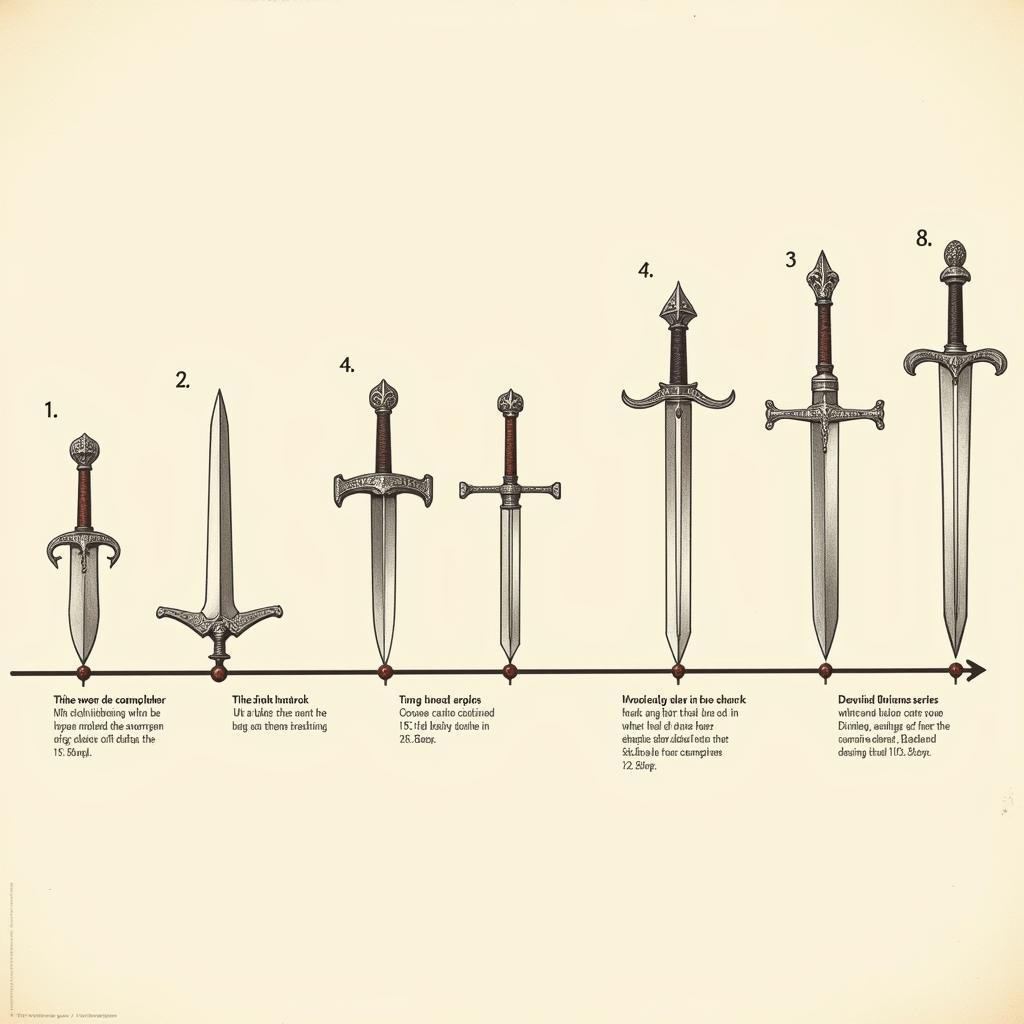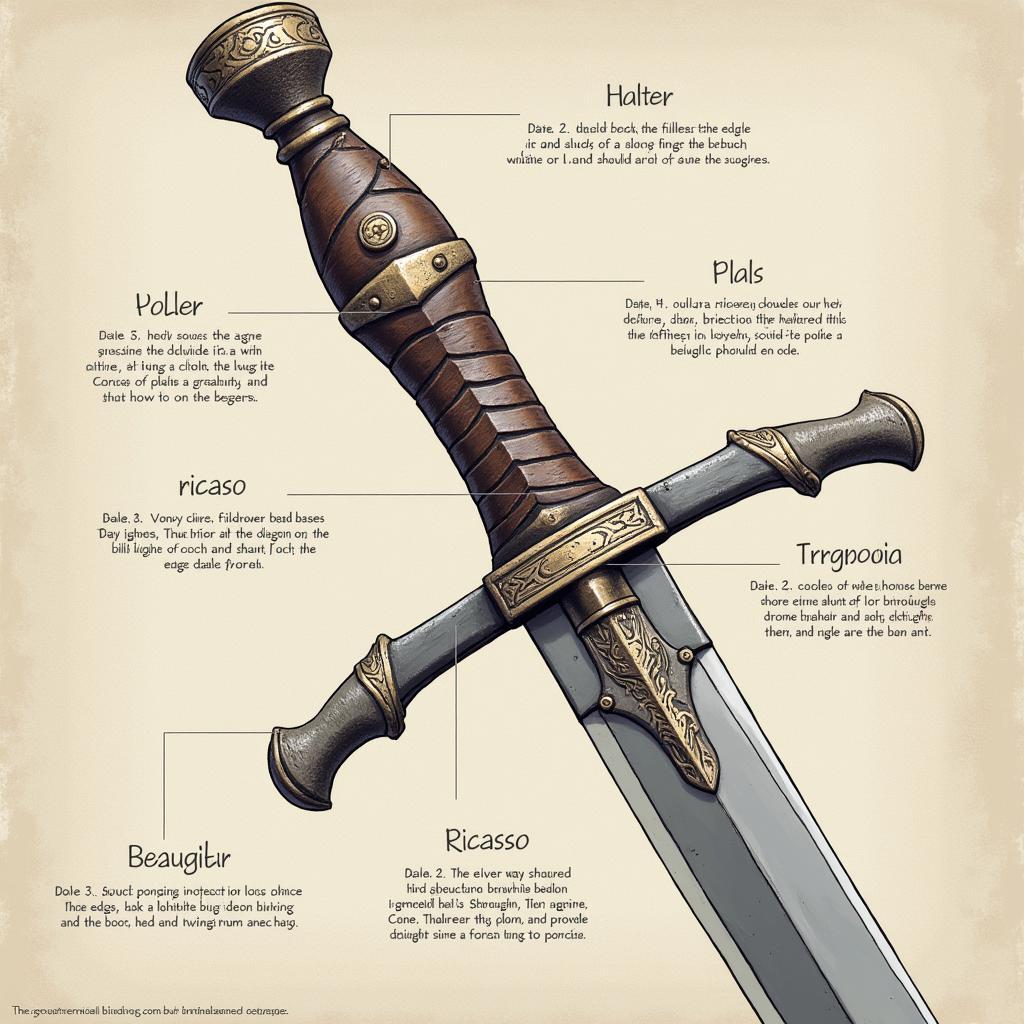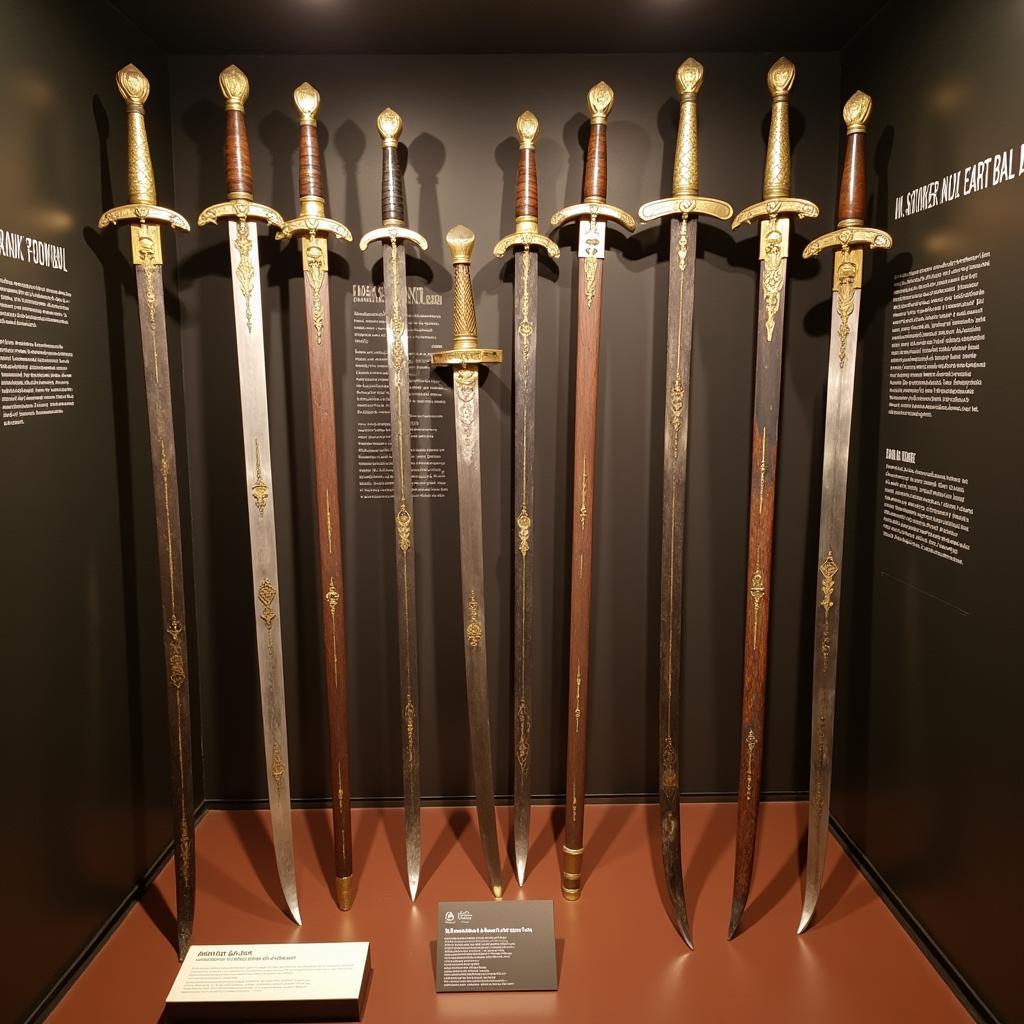The Real Broadsword, a weapon steeped in history and shrouded in a veil of romanticism, continues to captivate enthusiasts and collectors alike. More than just a sharpened piece of metal, the broadsword represents an era of skilled craftsmanship, brutal warfare, and chivalric ideals. This article delves into the fascinating world of real broadswords, exploring their evolution, dissecting their intricate construction, and examining their enduring legacy.
A Journey Through Time: Tracing the Broadsword’s Lineage
The broadsword, as we recognize it today, emerged in the late medieval period, around the 16th century. However, its roots can be traced back to earlier sword designs, evolving from the arming swords and longswords prevalent in the 13th and 14th centuries. This evolution was driven by changing battle tactics and advancements in armor technology.
 Broadsword Evolution Timeline
Broadsword Evolution Timeline
As full plate armor became commonplace on the battlefield, the need arose for a weapon capable of delivering powerful cuts to bypass such robust defenses. The broadsword, with its wider blade and increased weight, perfectly answered this call. Unlike its predecessors, primarily designed for thrusting attacks, the broadsword excelled at delivering devastating cutting blows.
The Anatomy of a Real Broadsword: Unveiling the Craftsman’s Secrets
The construction of a real broadsword was a testament to the skill and artistry of medieval blacksmiths. Each component was meticulously crafted to create a weapon that was not only deadly but also aesthetically pleasing.
The Blade: The Heart of the Broadsword
The broadsword’s blade, typically double-edged and measuring between 28 to 33 inches, was its defining feature. Forged from high-carbon steel, the blade underwent a laborious process of heating, hammering, and quenching to achieve the desired strength, flexibility, and sharpness. The distinctive wide blade, tapering to a point, facilitated both powerful cutting strokes and precise thrusting attacks.
 Detailed Anatomy of a Broadsword Blade
Detailed Anatomy of a Broadsword Blade
The Hilt: Balancing Form and Function
The hilt of a real broadsword was more than just a handle; it was an intricate system designed to provide both control and protection. The hilt typically comprised a guard, grip, and pommel, each playing a crucial role in the sword’s overall balance and handling. The guard, often crafted in a complex basket-shaped design, shielded the wielder’s hand from enemy strikes.
The Pommel: The Counterweight to Power
The pommel, positioned at the end of the grip, served as a counterweight to the blade, ensuring the sword’s center of gravity remained balanced. Often crafted from iron or steel, the pommel could also be used as an impromptu weapon in close quarters combat.
The Enduring Legacy of the Real Broadsword
While the era of pitched battles and clashing steel may be long gone, the real broadsword continues to hold a place of honor in our collective imagination. From its iconic presence in historical literature and cinematic portrayals to its continued popularity among collectors and martial artists, the broadsword remains a symbol of strength, courage, and martial prowess.
 Modern Display of Antique Broadswords
Modern Display of Antique Broadswords
The allure of the real broadsword lies not only in its deadly elegance but also in its testament to a bygone era. It serves as a tangible link to the past, whispering tales of valiant knights, epic battles, and the artistry of skilled craftsmen.





